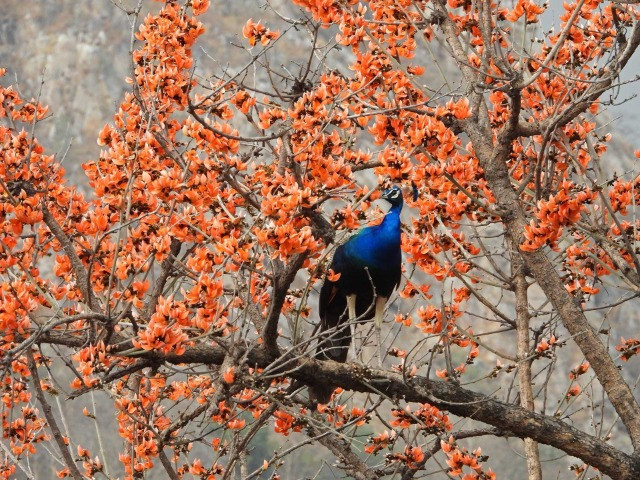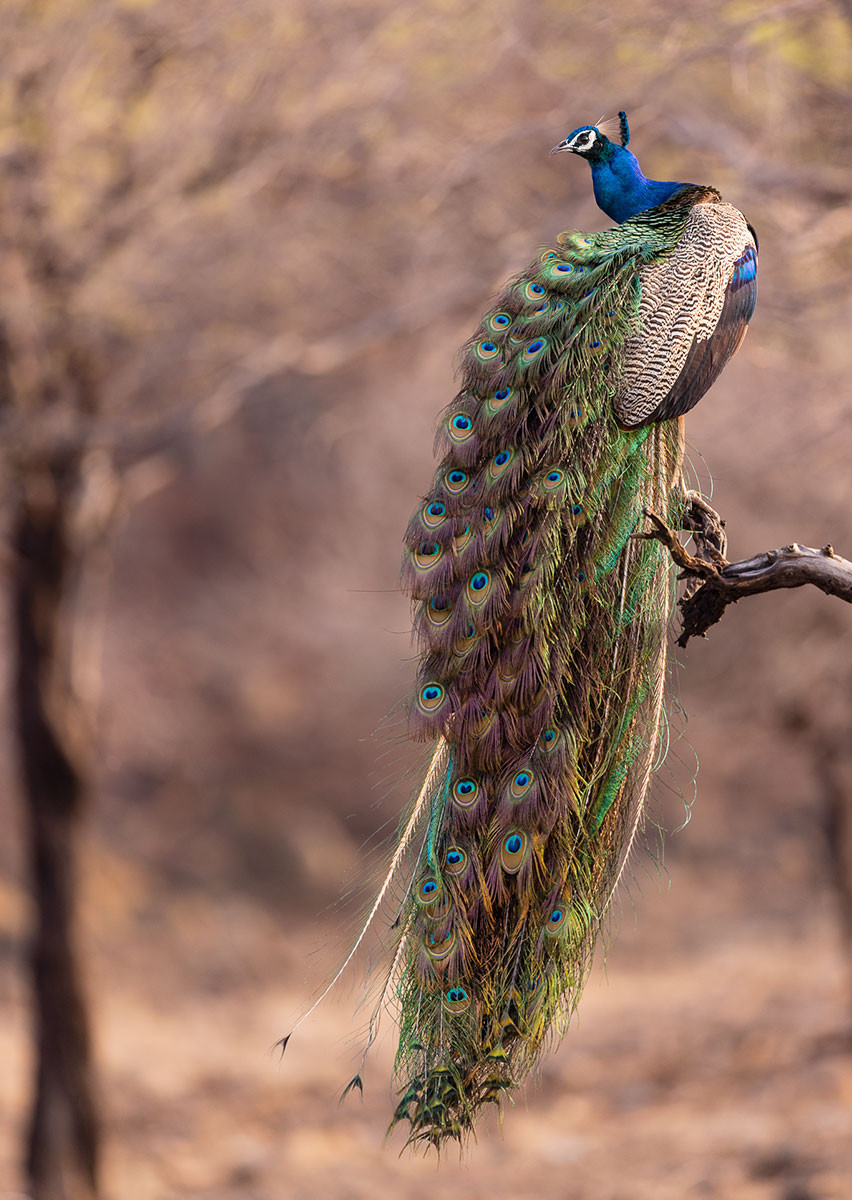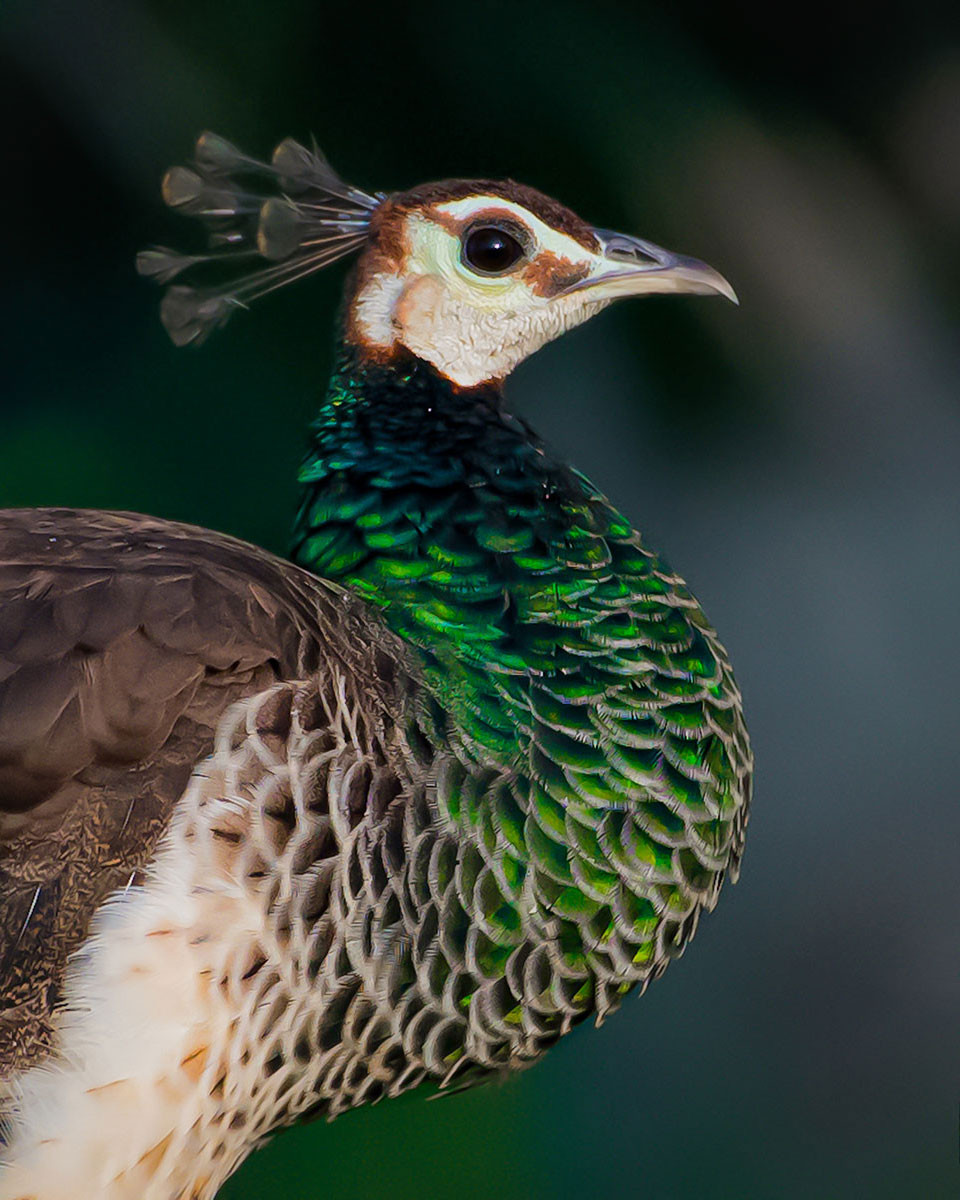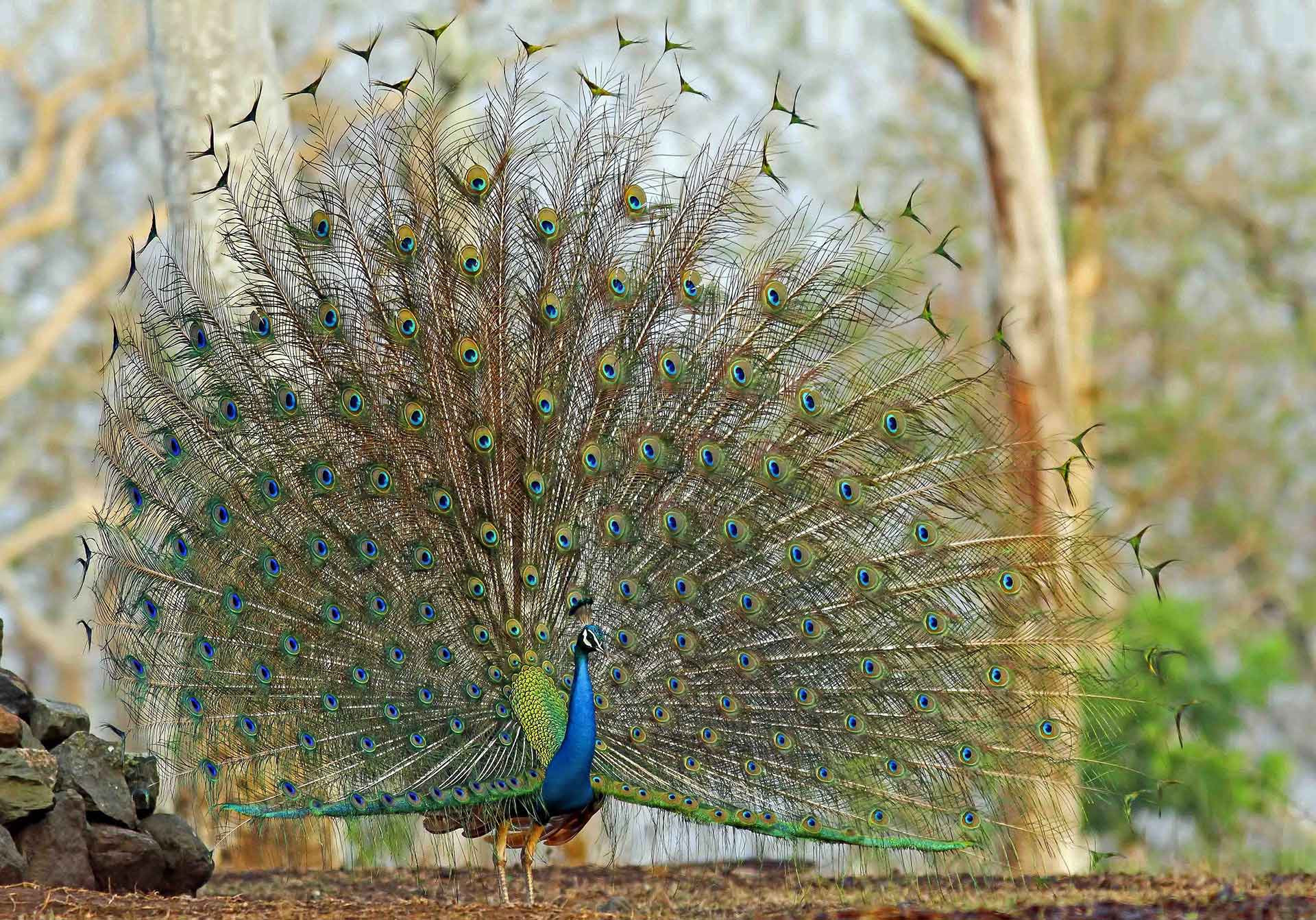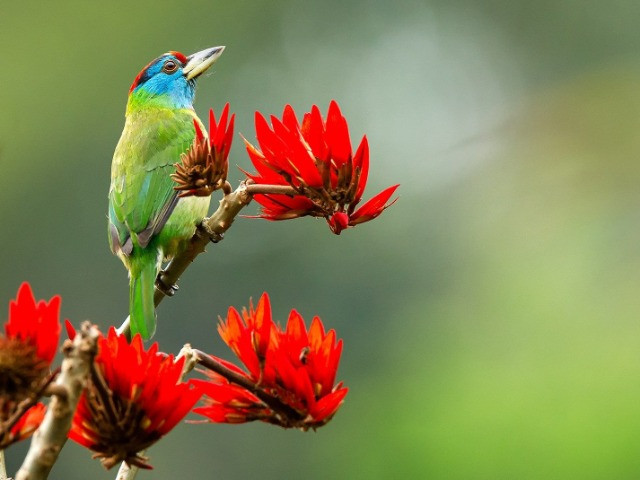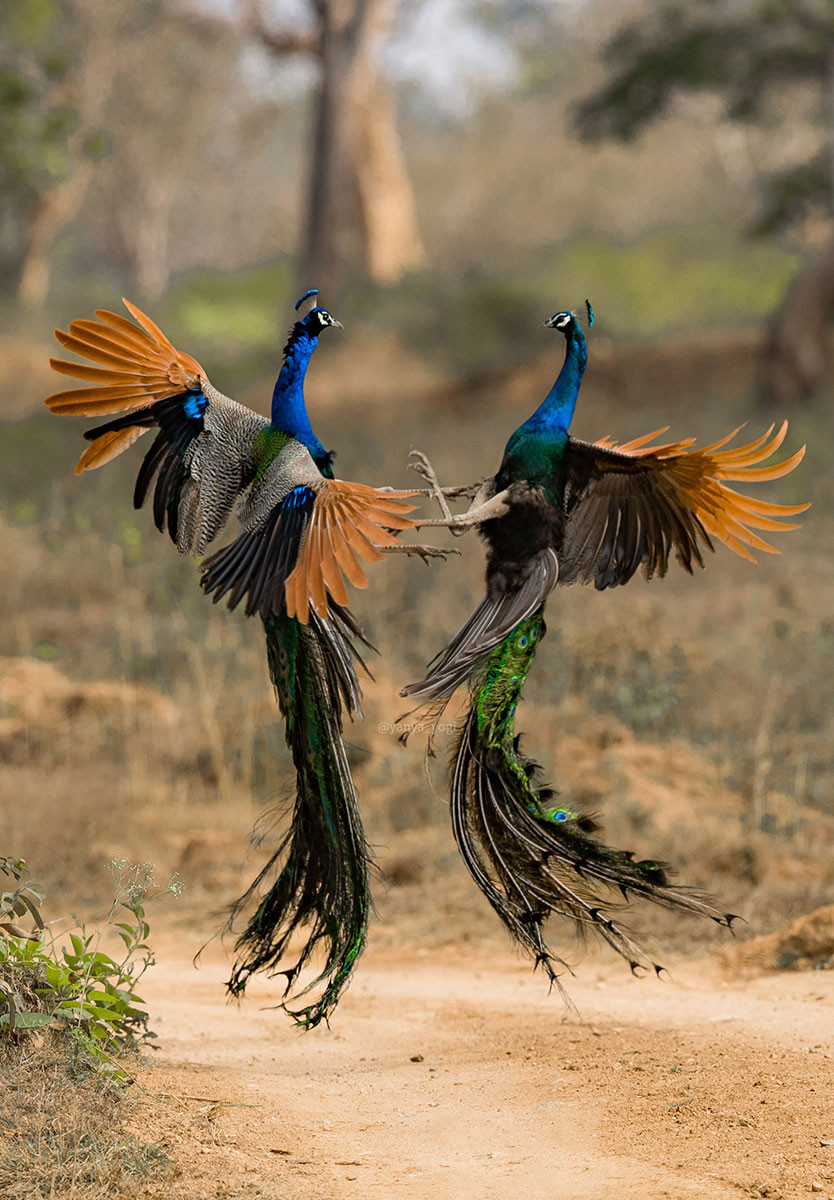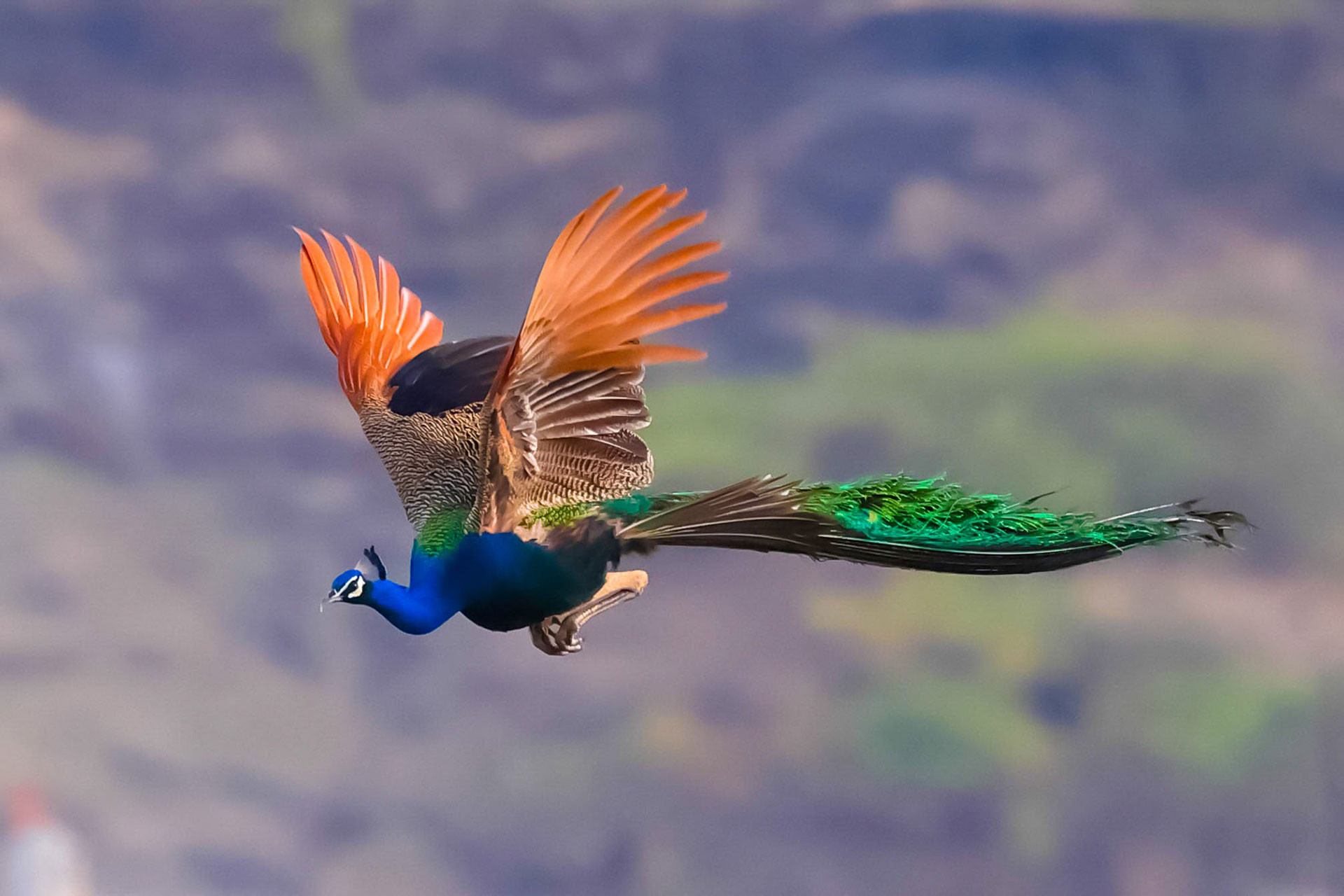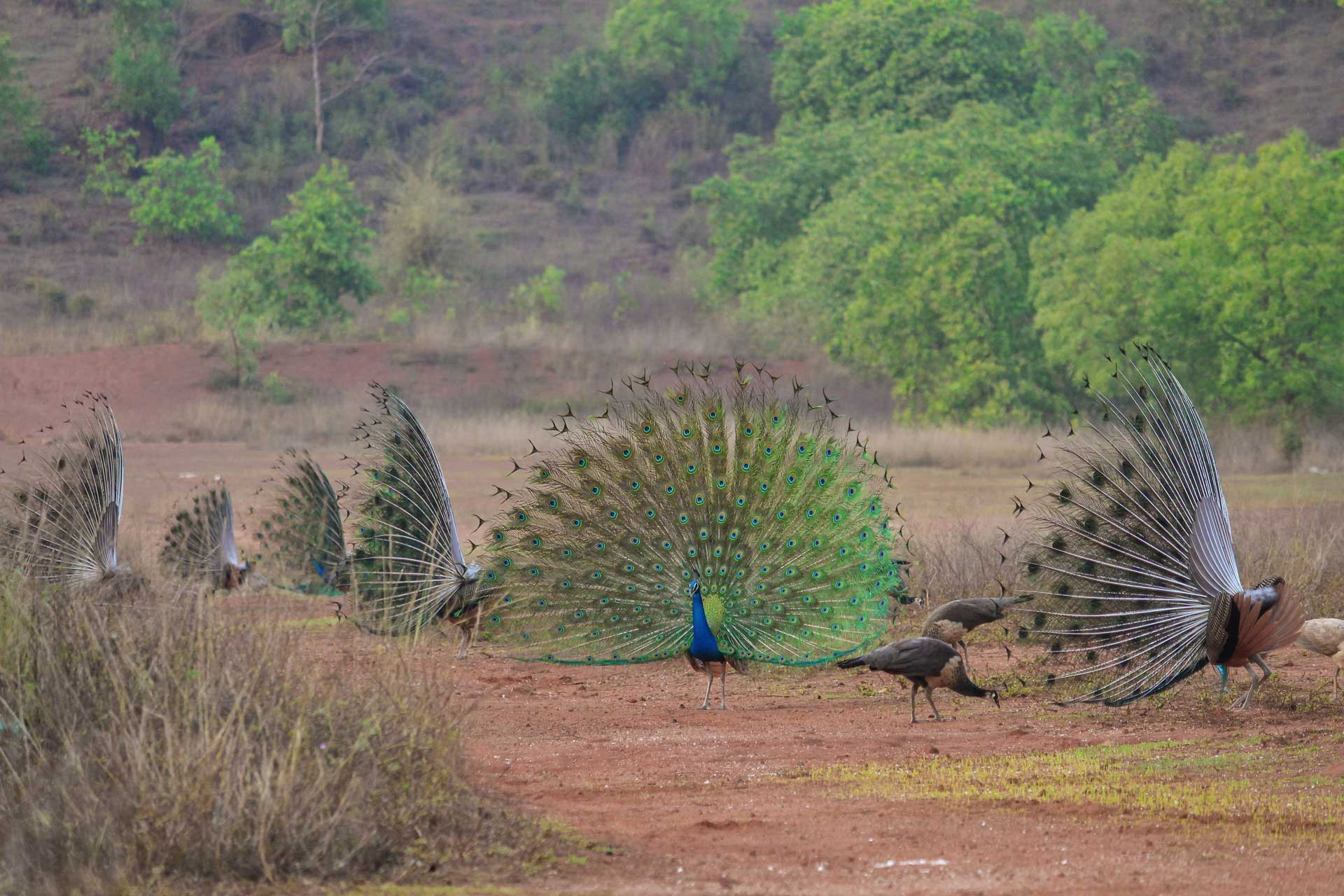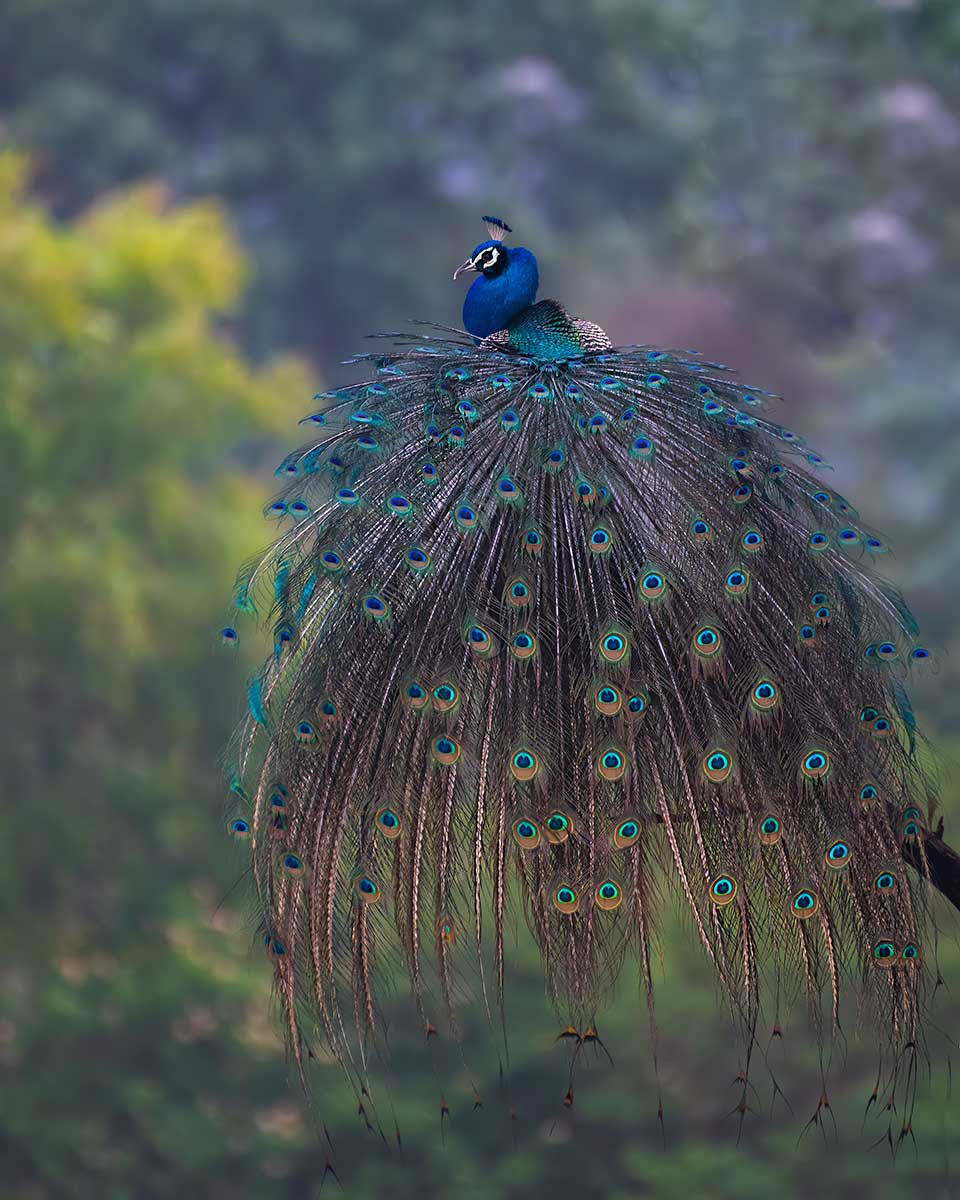How does one ID a bird? A quick Google search reveals several tips. By noticing its colours, markings and distinct morphological features, listening to its sounds, watching its behavioural traits and more. But with the Indian Peafowl, one can simply throw away this cheat sheet. The peacock needs no introduction!
Whether you are a birder, a wildlife photographer, a nature lover or just someone who happens to chance upon this beautiful avian; the Indian Peafowl elicits the same response from everyone. Mobile phones and cameras come out in no time as we frantically try to photograph the bird in all its glory. What's more? No matter how many times we find ourselves in its presence, it continues to leave us in awe. We photograph the Indian Peafowl as if it were the first time we ever saw one.
The Indian Peafowl is the national bird of India and has a significant cultural and historical presence. The famous peacock throne of the Mughal empire, Jaipur's enthralling Peacock Gate and a popular tourist destination, the Peacock temple in Tumkur, Karnataka—the bird has marked its presence across cultures, regions and beliefs.
So today, we shine a light on this bird that pretty much stands as a representative for the country's avifauna. From fun facts to critical threats that loom large, we bring you a quick guide about all things Indian Peafowl.
Peacocks and Peahens
First things first, although commonly referred to as the peacock, it is only the male peafowl which is called a peacock whereas the female peafowl is a peahen. Peafowls are members of the Phasianidae family—the same group which also includes pheasants, chickens, partridges and turkeys. The peafowl family is further divided into the Indian or Blue Peafowl (Pavo cristatus), Green Peafowl (Pavo muticus) and the Congo Peafowl (Afropavo congensis). As the name suggests, the Indian Peafowl is common in India, the Green Peafowl is found in China, Indonesia, Myanmar and Thailand, and the Congo Peafowl is named after the Central African nation, which is its place of origin. The Indian Peafowl is designated as Least Concern on the IUCN Red List of Threatened Species, while the Green Peafowl is marked Endangered and the Congo Peafowl as Near Threatened.
Colours Both Dull and Bright
Zooming in on the Indian Peafowl, the bird measures about 100-115cm from its bill to tail. Unlike the Indonesian or Green Peafowl, where both sexes are similar in appearance, the Indian Peafowl displays sexual dimorphism. Peacocks are known for their resplendent blue and green colours, while peahens exhibit dull brown plumage, a white belly and lack the signature train. The average lifespan of an Indian Peafowl in the wild is about 20 years. Don't be fooled by their large size, these birds are capable of flight and can easily perch on tree tops. They usually roost on trees during the night time.
A Feather Like No Other
Before we talk more about the Indian Peafowl, let’s address the feather in the room. The peacock's feather is its signature morphological feature and the first image that comes to mind when one thinks of the bird. But peacocks are not born with these colourful feathers. Males start to develop colour at about three months of age and their feathers only become fully developed when they sexually mature at about three years. Peacocks also undergo moulting and lose their feathers at the end of the mating season. Not to worry, they grow them back before the next season arrives. Wonder what makes these feathers shine? They have crystal-like structures, which depending on how much light falls on them, reflect different wavelengths, exhibiting the bright shiny colours we all love.
You may also like to read
From Forests to Cities
Indian Peafowls are native to India and Sri Lanka. The bird has been introduced to many other countries as well, such as Australia, New Zealand and the Bahamas. Their preferred habitats include deciduous forests, shrublands and grasslands. The Indian Peafowl usually resides below elevations of 1,800m. If you are wondering about the many times social media reels revealed a peafowl making its way through an urban area, then you are not wrong. Peafowls can live close to agricultural and human-occupied spaces, as long as there is a water source nearby.
Seeds and Reptiles
Pop-quiz time! What does the Indian Peafowl eat? Not sure, right? For all the attention the bird receives, most of us are unaware about their basic traits. The Indian Peafowl is an omnivore, which feeds on seeds, fruits, insects and even reptiles! Like how they adapt to their environment, they choose wisely with their food. Indian Peafowls often catch small snakes while leaving the big ones alone. When they reside near agricultural areas, they feed on crops like paddy, tomato and banana.
A Polygamous Courtship
Indian Peafowls are polygamous, and the peacock will often mate with several peahens during the mating season, which coincides with the monsoon. The male shows off its feathers to woo a potential mate, while the female selects her partner based on the colours, the quality of the feathers in the tail and the number of eyespots on them. The male peafowl also defends its territory from other males during the breeding season. Interestingly, when researchers studied peafowl mating, they found that females spent a lot of time looking at the male’s legs and the lower part of the train. Indian Peafowls build nests on the ground, lining them with sticks and debris. A typical clutch size is about 6-8 eggs, light brown in colour and are incubated for about 28 days by the female.
A Litany of Threats
Although listed as Least Concern from a conservation standpoint, the Indian Peafowl faces numerous threats across its habitat. As the species has a wide geographic distribution, it is often challenging to track local threats and their impacts. In January 2021, the residents of Gurgaon reported incidents of peacock poaching in the Aravalli Biodiversity Park. Several metal traps were found in the park that were set to capture these birds for their feathers. The Indian Peafowl is protected as a Schedule I species under the Wild (Life) Protection Act 1972. While selling fallen feathers is allowed, it is often difficult to ascertain the origin of the feathers sold in the market.
Peafowls are also poached for their body parts for their use in traditional medicines. Another significant concern is the pesticide treatment of seeds. In 2020, Down To Earth reported that 40 peacocks succumbed to insecticide poisoning by consuming treated seeds in Morena, Madhya Pradesh. A post-mortem revealed that the insecticide levels were three times the accepted levels for seed applications. Like several other animals and birds, the Indian Peafowl finds itself affected by linear intrusion projects that cut through their habitats, adding to their woes. In September this year, a small pride of Indian Peafowls collided with a passenger train near the Melmaruvathur train station in Tamil Nadu. The birds were grazing in the fields nearby and flew on to the track as the train approached the station. One of the birds succumbed to the collision.
From Cultural Reverence to Conservation Attention
Indian Peafowls play a crucial role in keeping a check on local reptile and insect populations. They also feed on insects that harm crops, indirectly protecting the harvest of farmers. Like many other species, they are facing the brunt of rapid urbanisation and habitat modification. While a survey conducted in 1991 by World Wildlife Fund for Nature revealed that the peafowl population had declined by 50 per cent since independence, the State of India’s Birds Report 2020 showed that the country’s peafowl population had increased considerably in the last decade. While this is good news, it places immense pressure on the species to thrive in a rapidly changing environment. As they share spaces with humans, increased instances of conflicts are being reported due to crop damage. This calls for devising conservation and management practices to ensure that the birds are not affected by anthropogenic pressures. The Indian Peafowl may be the national bird and therefore revered culturally. But it is high time that we pay attention to its needs and habitats.
